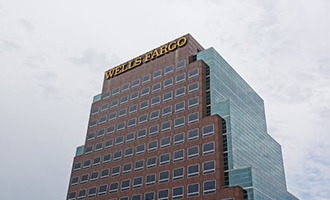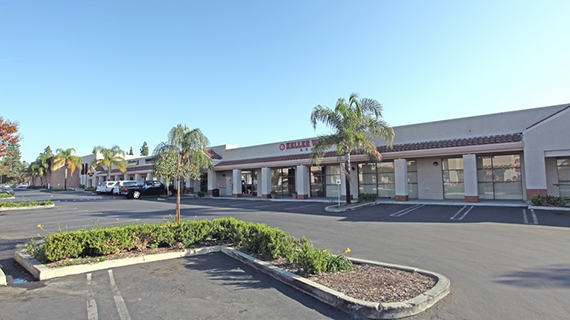Los Angeles’ commercial property market has been blazing hot in places like Hollywood and Playa Vista over the past couple of years, with properties trading for record high prices per square foot.
But that doesn’t mean everyone is in the black. Indeed, a recent analysis of July CMBS data provided to The Real Deal by research firm Trepp shows that a slew of L.A. property owners, particularly those with assets outside of city centers, have struggled to pay back their creditors over the past year. And, with approximately $56 billion in CMBS loans set to mature by 2017, there could be more defaults on the way.
Read on for a closer look at L.A. County’s 10 most distressed properties, ranked by current balance.
1.The Alhambra — $130M
A $130 million loan attached to the Alhambra, the Ratkovich Co.’s mixed-use office campus in Downtown Alhambra was recently transferred to special servicing after it was classified as non-performing beyond maturity.
The securitized loan was issued a decade ago by Goldman Sachs. The property had been plagued by tenant defections, but more recently has seen a flurry of new leases. In March, Ratkovich announced that the complex was 70 percent leased and said it expected it would be 90 percent occupied by the end of 2016.
A spokesperson for the company told The Real Deal last week that it was in the final stages of securing a loan to recapitalize the property. “While we have continued to fulfill payment obligations against the existing CMBS loan, the recapitalization process has taken longer than anticipated,” the spokesperson said. “Since 1999, the Ratkovich Company and our partners have invested nearly $100 million to protect, enhance and expand The Alhambra campus into a truly integrated urban community. We anticipate an expedient resolution to the recapitalization, and remain confident in our future plans for the property.”
2. Glendale Center — $125M
A $125 million loan attached to the Glendale Center, a 14-story, Class A office building at 611 North Brand Boulevard in Glendale went into REO status in 2012 after the borrower defaulted.
The former owner Maguire Properties paid $71.1 million for the building in 2003 and used the CMBS loan, issued by Nomura, to recapitalize it in 2006. The property went into default after it failed to generate enough rent to meet its debt service requirements and the bank stepped in. Tenants included Disney.
The loan matured earlier this year. The building is not currently available for sale.
Maguire, once one the L.A. region’s biggest office landlords, defaulted on a series of loans after overpaying for properties at the height of the last real estate cycle and handed over the keys to several properties.
3. West Covina Village Community Shopping Center — $39.48M
A $39.48 million loan attached to the West Covina Village Shopping Center, a 229,252-square-foot community shopping center built in 1982 by Ziad Alhassen, has been in special servicing since 2014. The lender is considering selling the note, according to Trepp.
The CMBS loan was issued to the borrower in 2006. The maturity date was extended by the lender through 2017.
The loan is cross collateralized and cross-defaulted with the Wells Fargo Bank Tower (also on this list.) The borrower was making interest only payments as of July while submitting quarterly principal payments, according to Trepp.
4. Wells Fargo Bank Tower — $36.08M
A $36 million loan attached to a 14-story Class A office building in West Covina is currently in default after the borrower, Eastland Tower Partnership, an entity also linked to developer Ziad Alhassen, failed to make payments. The original loan, which was for $41 million, was originated by Column Financial in 2006. Tenants of the building include Wells Fargo.
The bank appears to have taken control of the asset at foreclosure auction for $28 million earlier this year in a deal that valued the tower at $64.62 million. The maturity date for the loan was extended through 2017.
5. Whittier Hospital Medical Center — $26.1M
A $26.1 million acquisition loan attached to a 142,776-square-foot medical office complex at 9080 Colima Road in Whittier fell into default after several of its medical tenants departed the complex.
The bank-owned property has more recently upped its leasing efforts and has inked 11 new leases according to Trepp.
The loan was originated by Nomura in 2007.
6. Chatsworth Business Park — $22M
Five years after purchasing the 231,770-square-foot office complex for $46.7 million, the now defunct Grubb & Ellis Realty Investors defaulted on $22 million of its debt from a $33.75 million loan originated by GACC. The loan was transferred to a special officer in March 2010, a month before it matured.
The property at 21605-21615 & 21415 Plummer Street went into foreclosure in November 2011. It was 100 percent leased at the time.
Around the same period, Grubb & Ellis filed for Chapter 11 bankruptcy, according to Trepp data. Just months after, it was acquired by BGC Partners to create what is now Newmark Grubb Knight Frank. The property is now 50 percent leased, according to CoStar.
7. Castaic Village Shopping Center — $16.8M
Columbus Pacific Properties bought the 100,000-square-foot shopping center at 31810-31970 North Castaic Road for $11.5 million with the intention of growing its value through expansion, the Santa Monica-based firm’s principal Brian Shirken told the L.A. Times in 2000.
In 2004, Columbus Pacific acquired a $20.6 million loan from Keybank. Though the company maintained payments throughout the recession and the immediate recovery from it, the 125,000-square-foot property’s loan went into default in January 2011, with $16.8 million remaining in debt. Efforts in refinancing were futile.
Two months later, it was transferred to a special servicer. Now, six years after becoming REO, the 1992-built center is on the market, according to Trepp notes.
Its biggest tenant, Ralph’s Grocery, is shuttered.
8. Northridge Promenade Shopping Center — $14.7M
Newport Beach-based firm Core Realty first acquired the 80,000-square-foot Northridge Promenade Shopping Center in 2007 for $22 million, according to CoStar. In April of that year, Core Realty acquired a $15.1 million loan from Wachovia, classified as an acquisition with interest only debt service payment for the first 84 months. The loan was set to convert to P&I in May 2014, according to Trepp.
Troubles began in July 2011, when Core requested a loan modification due to cash flow issues. Soon after, red flags were raised that Core and its property management arm failed to pay brokers’ commission on the leases they brought in.
Totaling $14.7 million, the remaining debt was transferred to a special servicer in June 2011 and sold in foreclosure the following year. It was about 78 percent leased at the time, according to Trepp.
As of July 2016, the three-building property is not on the market.
9. Airport Plaza — $12.9M
Sitting on a 5.4-acre site in Long Beach, the 150,403-square-foot Airport Plaza office complex was purchased by Arden Realty in 2006, according to CoStar, right as Arden’s sale to GE was closing.
The troubles began in October 2012, Trepp notes show, when the only tenant at the time, the Boeing Company, allowed its lease to expire. Four months later, the $12.9 million loan was transferred to a special officer. The lender, Morgan Stanley, won the foreclosure auction that took place the following March, and acquired back the property as a ground lease.
10. Antelope Valley Plaza — $12.8M
Four years into acquiring the Antelope Valley Plaza for $20.2 million, Mar Monte Corp.’s ownership of the 126,000-square-foot Lancaster shopping center was in good shape. Even two months before its imminent default notice, watchlist commentary observed in May 2010 that “total returns in the final years of the forecast will impress, setting the market up for nice value-add or market timing plays,” according to Trepp notes.
That following July, Mar Monte’s $13.2 million loan, originated by Keybank, was transferred to a special servicer. It was transferred back the following year, but by 2013, occupancy dropped to barely above 60 percent. Requests for loan modification were denied and by early 2015, the loan was back to a special servicer.
The mall finally went into foreclosure in August 2014, with Mar Monte still owing $12.8 million. The property will soon be marketed for sale, according to Trepp.


